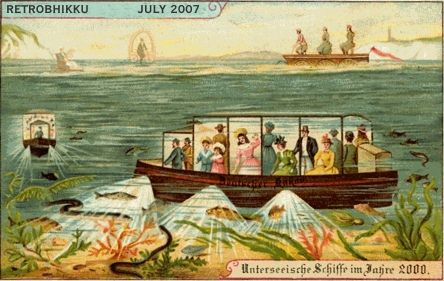- George Borrow
11 july 2007
 According to Colin Thubron, Robert Byron wrote that the catalyst for his fascination with Persian art was a photograph of Gunbad-i-Kabus, the great 11th-century tomb-tower near the Caspian sea. It's an unexpected building; none of the curves and floridity we expect from the later art and architecture of the region. Here are the pictures he took of it in the 1930s, and here's how he approached it:
According to Colin Thubron, Robert Byron wrote that the catalyst for his fascination with Persian art was a photograph of Gunbad-i-Kabus, the great 11th-century tomb-tower near the Caspian sea. It's an unexpected building; none of the curves and floridity we expect from the later art and architecture of the region. Here are the pictures he took of it in the 1930s, and here's how he approached it:The tower is empty; it was the mausoleum of a prince who was suspended from its ceiling in a glass coffin in the year 1007. What became of it or him is uncertain. Byron described the building thus:
The bricks are long and thin, and as sharp as when they left the kiln, thus dividing the shadow from the sunshine of each buttress with knife-like precision. As the buttresses recede from the direction of the sun, the shadows extend on to the curving wall of the cylinder between them, so that the stripes of light and shade, varying in width, attain an extraordinary momentum. It is the opposition of this vertical momentum
 to the lateral embrace of the Kufic rings that gives the building its character, a character unlike anything else in architecture.
to the lateral embrace of the Kufic rings that gives the building its character, a character unlike anything else in architecture.I still hold the opinion I formed before going to Persia, and confirmed that evening on the steppe: that the Gunbad-i-Kabus ranks with the great buildings of the world. (ibid.)
13 july 2007
To go back to the previous entry, what would Byron's great buildings have been? He prided himself in the rejection of received icons, so the usual suspects might well have been dismissed out of hand.
In this connection, there's this reported snippet: when Byron was in Russia, his Intourist guide insisted that Shakespeare's plays could never have been written by a grocer from Stratford-upon-Avon. Byron replied: "They're exactly the sort of plays I would expect a grocer to write."
One longs to see his architectural list. It may well have had Jam on it.
17 july 2007
It is 12.20 in New York a Friday
three days after Bastille Day, yes
it is 1959 and I go get a shoeshine
because I will get off the 419 in Easthampton
at 7.15 and then go straight to dinner
and I don't know the people who will feed me
I walk up the muggy street beginning to sun
and have a hamburger and a malted and buy
an ugly New World Writing to see what the poets
in Ghana are doing these days
I go on to the bank
and Miss Stillwagon (first name Linda I once heard)
doesn't even look up my balance for once in her life
and in the Golden Griffin I get a little Verlaine
for Patsy with drawings by Bonnard although I do
think of Hesiold, trans. Richmond Lattimore or
Brendan Behan's new play or Le Balcon or Les Negres
of Genet, but I don't, I stick with Verlaine
after practically going to sleep with quandariness
and for Mike I just stroll into the Park Lane
Liquor Store and ask for a bottle of Strega and
then I go back where I came from to 6th Avenue
and the tobacconist in the Ziegfeld Theatre and
casually ask for a carton of Gauloises and a carton
of Picayunes, and a New York Post with her face on it
and I am sweating a lot by now and thinking
of leaning on the john door in the Five Spot
while she whispered a song along the keyboard
to Mal Waldron and everyone and I stopped
breathing
7/17/59
- Frank O'Hara
18 july 2007
despite their not being the territory mapped
23 july 2007
35,000 year-old sculpture of a mammoth, found in the Jura, Germany; made not long after modern humans arrived in Europe.
25 july 2007
pinched from the via the TLS
Nothing to tell why I cannot write
in re Nobody; nobody to narrate this
latter acknowledgement: the self that counts
words to a line, accountable survivor
pain-wedged, pinioned in the cleft trunk,
less petty than a sprite, poisonous as Ariel
to Prospero's own knowledge. In my room
a vase of peacock feathers. I will attempt
to describe them, as if for evidence
on which a life depends. Except for the eyes
they are threadbare, the threads hanging
as from a luminate tough weed in February.
But those eyes - like a Greek letter,
omega, fossiled in an Indian shawl;
like a shaved cross-section of living tissue,
the edge metallic blue, the core of jet,
the white of the eye in fact closer to beige,
the whole encircled with a black-fringed green.
The peacock roosts alone on a Scots pine
at the garden end, in blustery twilight
his fulgent cloak stark as a warlock's cape,
the maharajah-bird that scavenges
close by the stone-troughed, stone-terraced, stone-ensurfed
Suffolk shoreline; at times displays his scream.
- Geoffrey Hill

